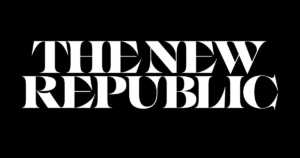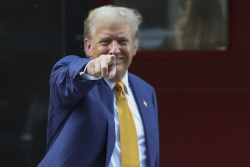
Many tales concerning the future are fashioned by imagining worst-case eventualities, then extracting classes from them about what we must always attempt to keep away from. A lot of the perfect science fiction takes this angle, and it makes for good studying (or watching or listening). However there may be as a lot worth—if no more—within the reverse method; what if we think about a world the place our efforts to repair right this moment’s greatest issues have paid off, and each humanity and the planet are flourishing? Then we are able to take steps in the direction of making that imaginative and prescient a actuality.
In a dialogue at South by Southwest this week titled Life on a Reforested Planet, the panelists took such a future retrospective standpoint. What, they requested, will the world appear like many years from now if we reach cleansing up the surroundings, bringing carbon emissions down, and restoring degraded forests? What alternatives are there round these eventualities? And the way will we get there?
The dialogue was led by Yee Lee, the VP of progress at an organization referred to as Terraformation whose mission is to speed up pure carbon seize by resolving bottlenecks to forest restoration. Lee spoke with Jad Daley, president and CEO of American Forests, the oldest nationwide nonprofit conservation group within the US; Clara Rowe, CEO of a worldwide community of restoration and conservation websites referred to as Restor; and Josh Parrish, VP of carbon origination at Pachama, which makes use of distant sensing and AI to guard and restore pure carbon sinks.
There are about three trillion bushes on Earth right this moment. That’s extra bushes than there are stars within the Milky Means, however it’s solely about half as many as there have been on the daybreak of human civilization. Scientists have estimated we are able to deliver again one trillion bushes on degraded lands we aren’t utilizing for agriculture. If these trillion bushes had been to be planted all collectively, they’d cowl all the continental US—however each continent besides Antarctica has reforestable lands. Moreover, if we restore one trillion bushes, they’d be capable to sequester round 30 % of the carbon we’ve put into the ambiance for the reason that industrial revolution.
Planting a trillion bushes is clearly no small process. It requires the correct of seeds, well-trained forestry professionals, collaboration with native and nationwide governments, and a number of ranges of in-depth analysis and planning—to not point out plenty of time, house, and exhausting work. In outlining what the world will appear like if we make it occur, the panelists highlighted present challenges that might be resolved in addition to alternatives we’d encounter alongside the way in which. Listed here are a couple of of the modifications we’ll see in our lives and the surroundings if we are able to make this imaginative and prescient a actuality.
Nature Fairness
We consider nature and bushes as having blanket advantages throughout society: they’re stunning, they clear the air, they supply shade and habitats for wildlife. However the unlucky actuality we’re dwelling in has an unequal distribution of entry to nature throughout populations. “Tree fairness isn’t about bushes, it’s about folks,” Daley mentioned. “In neighborhoods with plenty of bushes, individuals are more healthy—together with psychological well being advantages—and there’s much less crime. Folks relate to one another in another way.” This isn’t as a result of bushes trigger prosperity, however as a result of affluent communities usually tend to put money into landscaping and tree cowl, and to have the funds to take action.
The other facet of the coin reveals the drawbacks that non-green areas expertise, all of that are solely slated to worsen in coming years. “Right now in America, excessive warmth kills greater than 12,000 folks per 12 months,” Daley mentioned. Analysis tasks that quantity might rise to 110,000 folks per 12 months by the tip of this century, with the hardest-hit being those that don’t have air con, don’t have good healthcare—and don’t have bushes of their neighborhoods.
“Bushes have unimaginable cooling energy and each neighborhood wants that, however particularly locations the place individuals are already most in danger,” Daley mentioned. He identified that tree distribution maps are sometimes additionally maps of earnings and race, with the lowest-income neighborhoods having 40 % much less tree protection than the wealthiest neighborhoods.
In a future the place we’ve succeeded in planting a trillion bushes, cities may have equitable tree cowl. There are already steps on this path: the US Congress invested $1.5 billion in tree cowl for cities as a part of the Inflation Discount Act.
Incentives Align With the Wants of the Pure World
Capitalism seemingly gained’t get replaced by one other financial system anytime quickly, however non-financial incentives will tackle a bigger function in influencing enterprise and client selections, and regulators will seemingly step in and alter monetary incentives too. Carbon credit are one early instance of this (although there’s plenty of debate about their effectiveness), as are the subsidies round electrical autos and photo voltaic and wind power.
May we implement related subsidies or different technique of incentive round reforestation? Some international locations have already accomplished so. Costa Rica, Rowe mentioned, has been paying farmers to preserve and restore forests on their land for many years, making Costa Rica the primary tropical nation to reverse deforestation. “Individuals are getting paid to do one thing that’s good for the Earth, and it has modified the connection that plenty of the nation has to nature,” she mentioned. “So then it’s not simply concerning the cash; as a result of we’ve created an economic system that enables us to profit from nature, we are able to love nature otherwise.”
A Shift in Consumerist Tradition
Manufacturing—of all the pieces from vehicles to cell telephones to clothes—not solely makes use of power and creates emissions, it creates plenty of waste. When the most recent iPhone comes out, hundreds of thousands of individuals tuck their previous telephone into the again of a drawer and exit and purchase the brand new one, though the previous one nonetheless labored completely. We give previous garments to Goodwill (or throw them away) and purchase new ones lengthy earlier than the previous garments are unwearable or out of fashion. We commerce in our 10-year-old vehicles for the brand new mannequin, though the automotive has 10 extra years of drivability in it.
Having the most recent issues is a standing image and a approach to introduce some occasional novelty into our lives and routines. However what if we flipped that on its head, reversing what’s “cool” and high-status to align with the wants of the surroundings? What if we bragged about having an previous automotive or telephone or bike, and thereby not having contributed to the continual manufacture and disposal of still-useful items?
A shift to aware consumerism has already begun, with folks listening to the enterprise practices of firms they purchase from and looking for out manufacturers which are extra Earth-friendly. However this motion might want to develop far past its present state and embody a wider chunk of the inhabitants to essentially make a distinction.
Rowe believes that within the not-too-distant future, merchandise may have labeling with details about their provide chain and their affect on the native surroundings. “There are methods to weave forests into the each day cloth of our lives, and a type of is knowing what we devour,” she mentioned. “Take into consideration the cereal you had for breakfast. In 2050 the label may have details about the species of bushes restored within the place the place the wheat is grown, and the tons of carbon that had been sequestered by the regenerative agriculture on this space.”
She envisions us gaining a totally new perspective on what we’re part of and the way we’re having affect. “We’re touching nature in each a part of our lives, however we aren’t empowered to comprehend it,” she added. “We don’t have the instruments to take the motion that we actually need to take. In 2050, once we’ve reforested our planet, the way in which we now have affect will probably be seen.”
Job Progress in Forestry and Associated Industries
Planting a trillion bushes—and ensuring they’re wholesome and rising—would require a large mobilization of funds and folks, and can spur creation of all kinds of jobs. To not point out, reforestation will allow new industries to sprout the place earlier than there might be none. One instance Lee gave was when you restore a mangrove, a shrimping business can then be constructed there. “Once we’re fostering a brand new forestry workforce, the lightbulb second isn’t nearly forests and bushes,” he mentioned. “There’s an entire financial livelihood that’s created. The blocker is commonly, how will we ability new communities and practice them to have an entrepreneurial mindset?”
Parrish envisions the creation of “superhighways for nature,” an enterprise that might entail important job creation in itself. “Because the local weather modifications, as we get hotter, nature wants the power to adapt and migrate and transfer round,” he mentioned. “We have to create a community of connections with forests that present for that and have a various ecological framework.” This could apply not solely to major forests, he mentioned, however to suburban and even city inexperienced areas too.
Daley talked about that his group is seeing job creation on the entrance finish of the reforestation pipeline, with one instance being people who find themselves employed to gather the seeds that’ll be used to plant bushes. “We accomplice with the state of California and a corporation referred to as the Cone Core,” he mentioned. “Folks acquire cones to gather seeds they’ll use to reforest the burned acres in California.”
A Reforested World
Will these visions develop into actuality? We’re a great distance from it proper now, however planting a trillion bushes isn’t unimaginable. In Daley’s opinion, the 2 variables that may most assist the trigger are innovation and mobilization, and each consciousness and buy-in round reforestation are steadily rising. As extra folks really feel empowered to participate, they’ll additionally discover new methods to make a distinction. “Hope comes from company,” Daley mentioned. To interact with an issue, “you’ll want to really feel like you are able to do one thing about it.”
Picture Credit score: Chris Lawton / Unsplash
generator token and cash free for high e
free onlyfans premium account hack gener
google play reward card generator instruments fr
dream league soccer 2023 dls 23 mod
paypal cash adder 2023 get upto 500 fre
steam reward card free generator
the way to bypass activation lock on iphone
obtain hack dream league soccer 2023 f
supprimer le verrouillage d activation i
the way to take away icloud lock on iphone 14 p
ios 16 iphone 14 icloud unlock unlocks
generator cash fifa factors for fifa mob
free pubg cellular uc generator 2023
free instagram followers get limitless t
paypal cash generator 2023
iphone unlock icloud
ios 16 bypass icloud iphone locked
midjourney Free Limitless 100%
walmart reward card code generator




